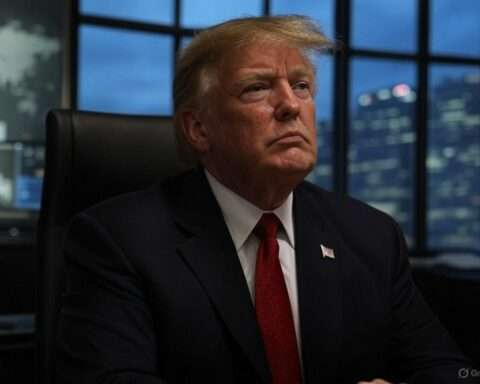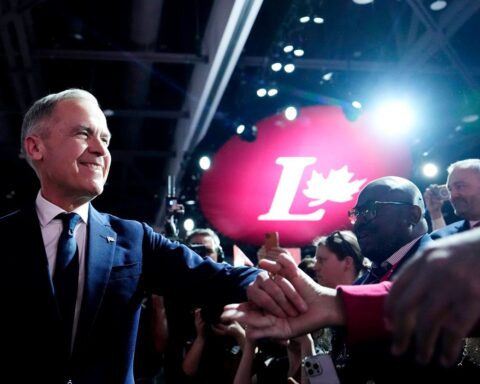In a surprising twist to President Donald Trump’s aggressive trade agenda, auto tariffs are indeed on the horizon, but not all levies will hit on the much-anticipated April 2 deadline, a development that has sent stocks soaring. Initially billed as “Liberation Day” by Trump, April 2 was expected to usher in a sweeping wave of reciprocal tariffs targeting imports, particularly automobiles, from key trading partners like Canada, Mexico, and the European Union.
However, recent signals from the White House indicate a more targeted approach, sparing some nations and industries from immediate duties. This unexpected flexibility has calmed jittery markets, with Wall Street responding enthusiastically to the prospect of a less disruptive trade policy rollout.
The shift in strategy became evident on March 25, 2025, as Trump and his economic team hinted at a scaled-back plan amid growing economic concerns and pushback from corporate leaders. Speaking to reporters after a Cabinet meeting, Trump suggested, “I may give a lot of countries breaks,” a stark departure from his earlier rhetoric of blanket tariffs. This pivot follows weeks of market volatility, with the Dow plunging nearly 10% since late November amid fears of a trade war-induced recession. The reprieve, particularly for the auto sector—a linchpin of U.S. manufacturing—has buoyed investor confidence, pushing the S&P 500 and Nasdaq to rebound from recent corrections.
A Rocky Road to Tariff Implementation
Trump’s tariff threats have been a cornerstone of his economic vision since his 2024 campaign, promising to restore American industrial might by slapping duties on foreign goods. The auto industry, heavily reliant on integrated supply chains across North America, emerged as a prime target. In early February, Trump confirmed plans for auto tariffs starting April 2, dubbing it a symbolic “Liberation Day” to signal America’s break from what he calls unfair trade deals. “We’re going to bring back jobs, big league,” he declared on Fox News, citing the 25% tariffs on Canadian and Mexican steel and aluminum as a precursor.
However, the reality of implementing such broad levies has proven complex. The United States-Mexico-Canada Agreement (USMCA), which Trump renegotiated in his first term, complicates unilateral tariff hikes, risking legal and diplomatic blowback. Canada’s Foreign Affairs Minister Mélanie Joly warned on BBC that her country was prepared to retaliate, stating, “Canada can win a trade war.” Mexico’s President Claudia Sheinbaum took a wait-and-see approach, telling CNN her government would hold off on countermeasures until April 2, but the threat of escalation loomed large.
Wall Street’s Rollercoaster Ride
The tariff saga has kept financial markets on edge. The New York Times reported that the S&P 500 dipped into correction territory—down over 10% from its February peak—by mid-March, as investors braced for supply chain disruptions and higher consumer prices. Auto giants like Ford and General Motors lobbied fiercely against the levies, warning NBC News that 25% tariffs on Canadian and Mexican imports could cost billions and jeopardize 500,000 jobs in Ontario alone. “The uncertainty is paralyzing,” one industry analyst told CNN, noting that car buyers were already facing shrinking discounts as dealers anticipated cost hikes.
Yet, Trump’s latest comments have flipped the script. Reuters reported on March 25 that senior advisers, including Treasury Secretary Scott Bessent and economic aide Kevin Hassett, signaled a focus on a “Dirty 15” list—countries with the largest trade surpluses and highest barriers—rather than across-the-board tariffs. This narrower scope, coupled with Trump’s hint at “flexibility,” sparked a rally. The Dow surged over 1,000 points on March 24, per CNN Business, as investors bet on a softer landing for the economy.
Trump Auto Tariffs Are Coming, But Not All Levies Hit April 2
The headline-making adjustment—that Trump auto tariffs are coming, but not all levies will be imposed April 2—has been a game-changer for the auto sector. Initially, Trump vowed to impose 25% duties on imported cars, trucks, and parts, targeting Canada and Mexico to pressure renegotiation of trade terms. “They’re ripping us off,” he told Fox News in early March, accusing allies of exploiting the U.S. market. The rhetoric alarmed automakers, with Hyundai announcing a $5.8 billion steel mill in Louisiana to hedge against import costs, according to CBS News.
Now, the White House appears to be backtracking—or at least recalibrating. Bloomberg and The Wall Street Journal reported that sector-specific tariffs, including those on autos, might be delayed beyond April 2, with reciprocal duties limited to a dozen nations. “We might be even nicer than that,” Trump teased, per Yahoo Finance, suggesting exemptions for allies who play ball. This shift has spared the auto industry an immediate hit, lifting stocks like Tesla, which had warned of trade war pain, per The New York Times.
Economic Warnings and Global Pushback
Despite the market’s relief, economists remain wary. The Organisation for Economic Co-operation and Development (OECD) warned CNN Business on March 17 that Trump’s tariff policies could slash U.S. growth to 2.2% in 2025 and 1.6% in 2026, down from 2.8% in 2024, while reigniting inflation at 2.8%. “It’s a toxic stew,” the OECD noted, pointing to global ripple effects. The Federal Reserve echoed this gloom, predicting GDP growth at just 1.7% this year, per CBS News, as businesses tighten belts amid tariff uncertainty.
Internationally, the response has been tense. The European Union, already retaliating with a 50% tariff on U.S. spirits like bourbon over steel duties, pushed back its broader levies to mid-April, per Yahoo Finance, buying time for talks. Canada’s “elbows up” protests in Toronto, covered by BBC, underscored public frustration with Trump’s threats, including his quip about making Canada the 51st state. “He’s playing poker with no cards,” one Canadian official told BBC, reflecting the high-stakes brinkmanship.
Corporate America’s Mixed Reactions
For U.S. businesses, Trump’s tariff dance has been a double-edged sword. FedEx slashed its 2025 outlook, citing tariff-fueled economic strain, sending its stock tumbling, per Yahoo Finance. Retailers like Walmart and Target reported cautious consumer spending, with CNN noting inflation fears curbing sales. Yet, the auto sector’s reprieve has sparked cautious optimism. “The window for dodging price hikes is closing,” an analyst told NBC News, urging car buyers to act fast, but the delay has bought breathing room.
Trump’s insistence that tariffs will rebuild manufacturing has met skepticism. “He might need a third or fourth term to reindustrialize America,” quipped CNN Business, highlighting the decades-long decline in factory jobs. Still, his base cheers the tough stance. On X, supporters hailed it as “4D chess,” though critics like Hillary Clinton scoffed, “You have got to be kidding me,” per trending posts.
What’s Next for Trump’s Trade War?
As April 2 nears, the tariff rollout remains a moving target. Trump’s Oval Office meeting with NATO’s Mark Rutte on March 13, covered by CNN Politics, hinted at broader trade talks tied to the USMCA, but details are scarce. Goldman Sachs raised its recession odds to 20%, per CNN, underscoring the stakes. “Markets are king,” an investment strategist told CNN Business, suggesting Trump may bend if stocks tank again.
For now, the partial rollback has steadied nerves. “It’s not the tariff Super Bowl we expected,” CNN Business quipped, referencing Trump’s earlier hype. But with reciprocal duties still slated for some nations, the trade war isn’t over—it’s just shifting gears. Congressional pressure, corporate lobbying, and global retaliation will shape the next chapter, with April 2 as a pivotal, if less dramatic, milestone.
This article draws on reporting from BBC, CNN, NBC, Fox News, The New York Times, and other outlets like Reuters, Bloomberg, The Wall Street Journal, Yahoo Finance, CBS News, and Al Jazeera, offering a comprehensive look at Trump’s evolving tariff strategy and its market impact.
Focus Keywords: Trump auto tariffs, April 2 tariffs, stock market rally, trade war impact, USMCA trade policy






